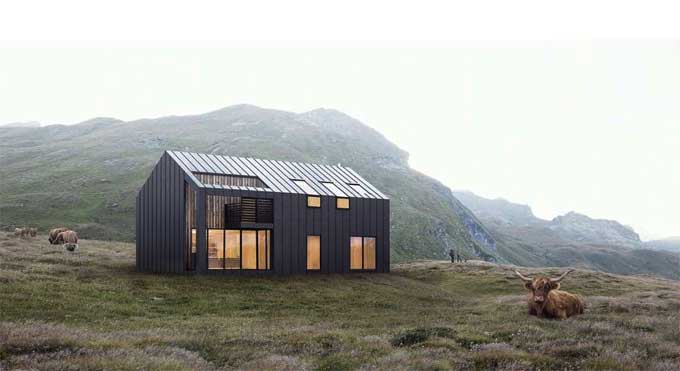Advantages for using VRay for Architectural Rendering

Designers, architects, and artists are unemployed if they cannot communicate their ideas. Any designer who wants to succeed must first understand that clients do not think as they do. Taking their hands, dumb them down, and blowing them away is what they need most. To draw an awe-inspiring response from the public, architects use a wide range of tools and the ability to showcase their skills.
V-ray is Universal plug-in that allows 3D modeling software of any kind to produce unbelievable results from your designs. You will especially enjoy working with V-Ray if you are an architect.
V-Ray gives you Fast Rendering
One would consider fast to be relative to a machine, settings, and overall size of the rendering model, but V-Ray consistently outperforms its competitors.
The benefit for architects is faster render times, animations, and drafts. It is really important to have a visualization tool that allows you to quickly figure out whether or not something will work before fully engaging in a lengthy presentation-quality rendering.
It will give you a chance to see the colors, the lighting, and the material so you can make decisions about composition and frame more quickly. V-Ray provides a faster rendering engine than any other rendering software. Using V-Ray if you need something fast that doesn't sacrifice quality on a tight schedule is something you should consider.
Seamlessly Integrate with SketchUp, Rhino, 3DS Max
It is probably the most valuable feature for architects to integrate with Google SketchUp. A simple set of tools allows SketchUp to present ideas quickly. However, it isn't the most technically sophisticated tool for modeling.
When using V-Ray, sketchy ideas can be put to life in as little time as possible. Meetings with clients used to hold to work out conceptual program issues, but now they can be enhanced with real-life visualization, with V-Ray in your pocket. There's something to be said for relying on technology instead of treating it like a crutch.
Access to Extensive Libraries and Resources
The massive material library that comes with V-Ray sets it apart from the competition. A material that isn't rendering perfectly with life-like precision won't be a consideration in your design.
It takes interior architecture and design to the next level to be able to mock up finish combinations on the fly. You won't spend hours explaining how different finishes will look on different surfaces. You will show them instead. As a result, they will be able to make decisions more quickly, depart sooner, and leave you to do what you love about architecture.
Realistic Visualization
The darkest blacks, the whitest whites, and the cleanest textures accurately represent real-life situations. You use V-Ray when creating spaces for clients so that they feel they can live in them.
Your design must be of high quality whether you submit it to a competition or present it to an authority. Despite its subjective nature, quality is a measure that is easy to recognize and quantifiable. You will be able to catch the eye of many people and boost your reputation when your work looks better than the rest. That is what architects and designers are all about at the end of the day.
Limitless Options
There are plenty of options for adjusting camera settings, bump maps, material textures, light source, depth of field, and more. Ultimately, it comes down to flexibility when you have so many options. In a design drawing, it is insatiable to control every aspect. For that reason, V-Ray caters to it. All the plug-in products can tailor to your specifications, so you can be sure it's yours alone.
V-Ray Speed for Quick Animations
V-Ray is extremely fast at rendering, which makes it easy to create animations quickly. It will give you an extra advantage when you explain design decisions to clients because what you show them is unexpected.
SketchUp has an intuitive interface that makes it simple to create animations. Using V-Ray to render frames generates quality animation without requiring server farms with enough power to power it.
Shadow & Light
As a way to unconsciously understand realism, light, and shadow, and how they render in architectural drawings, are two of the essential tools an architect has at his disposal. Lighting can be distracting or off on a drawing if it's not convincing. V-Ray is renowned for handling realistic light and shadow more accurately and more realistically than comparable renderers.
Unlimited Resources for Beginners as well as Professionals
There are probably few rendering products that are as popular as V-Ray. Those who have been listening to me at all know why. In short, V-Ray is packed with tutorials, lessons, and courses to help you use it to its full potential. Getting the most of a product requires practice due to its steep learning curve. It will take you less time to become good at it if you practice under guidance and focus.
Steep Learning Curve for becoming good architects
There is a learning curve because of the many options, settings, and extensive material library as you work your way through the process. V-Ray's value is in its work.
It is par for the course for architects to learn a system, tweak it to meet their preferences, and squeeze the most efficiency from it.
Material Rendering
Nothing is worse than a realistic visualization that doesn't look realistic. The project looks amateurish when architects catch between conceptual and finished work.
You must nail realism if you want it to be genuine. V-Ray stands out in this area.
That is possible because of the precision and consistency of V-Ray.

Image Courtesy: easyrender.com


